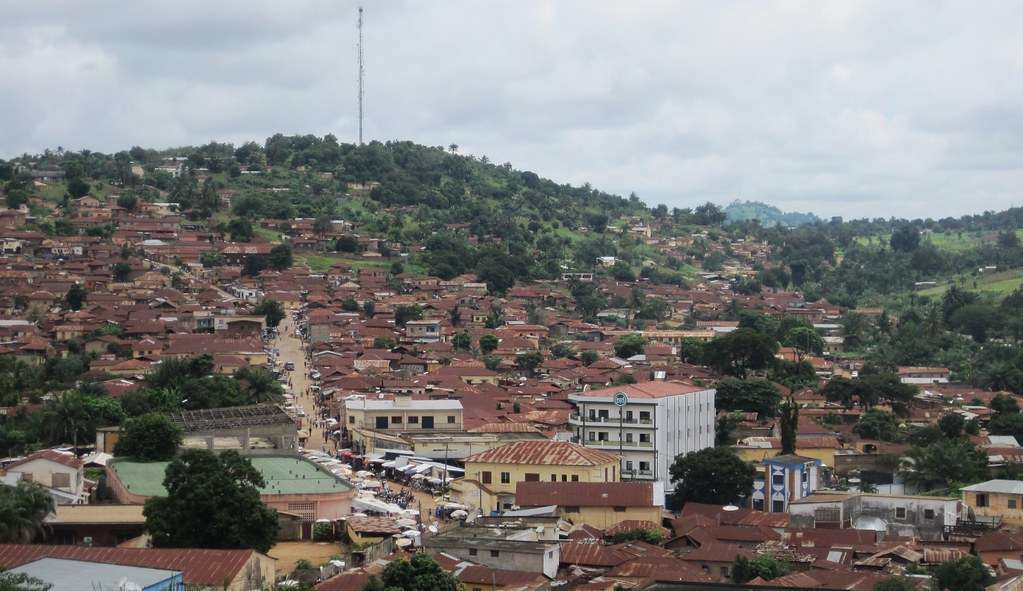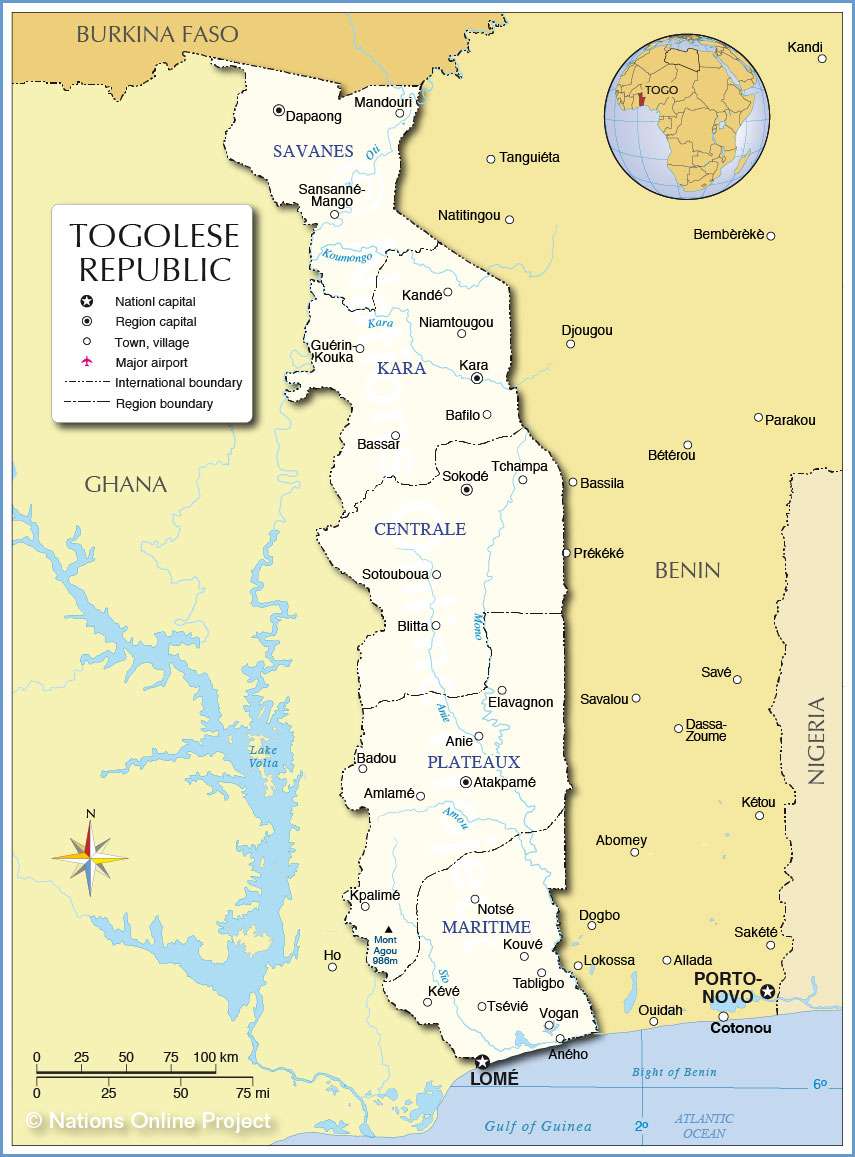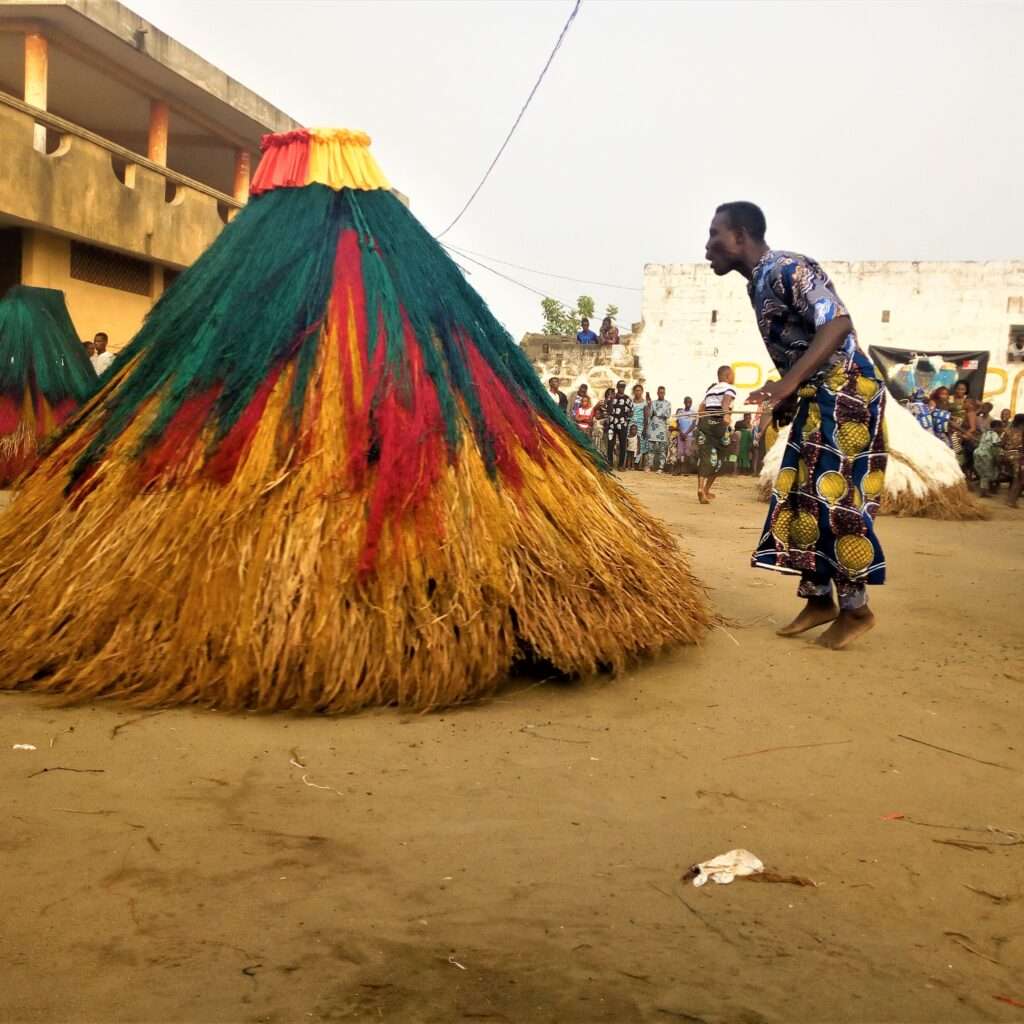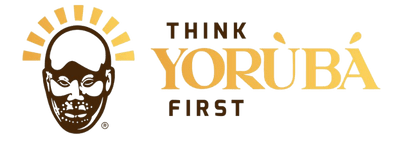Togolese Yoruba

Like Atakpame, like Idanre
In terms of landmark, Atakpame shares some similarities with Ibadan and Abeokuta. While the capital cities of Oyo and Ogun States flaunt the Olumo Rock and Oke Ibadan as their ancestral symbols, respectively, Atakpame, a settlement town that is about 160 kilometres away from Lome, the Togolese capital, defines its origin by seven mountains that surround it.
Just like many other towns in Yorubaland, where myths are explored to trace the people’s roots, Atakpame’s history is not complete without reference to the mountains. According to some elders of the town, the rocks played supernatural roles when the natives were engaged in battles with other ethnic groups. This is how Atakpame also shares topographical and historical similarities with Idanre, Ondo State, a town famed for the huge and acrobatic mountains that surround it.
According to Fantchede, Ife Togo is widely used in Atakpame because the people, who trace their descent to ile-Ife, are the dominant group there. She, however, expresses concern over the future of the language because not many young people speak it.
She says, “The number of young people who speak Ife here is decreasing because of changes in the society and the fact that it is not taught in schools. But I speak it any time I have the opportunity to do so. Our elders also use it constantly.”

Strange bed fellows
As a result of the entrenched cross-fertilisation that Ife Togo has had with French, Ewe, et cetera, it is easier for the Yoruba in Lome, Cotonou and Ajase, among others, to understand one another than for the immigrant Yorubas in Lome to understand Ife Togo speakers in Atakpame – and vice versa. A Yoruba scholar, Dr. Felix Fabunmi, notes that a language that is spoken by many people, such as Yoruba, usually has dialects that may differ from one another.

Ife Togo is well tone-marked
Yoruba is a tonal language, comprising the high, mid and low tones. That is how a word such as ‘odo’ can mean different things as the tone changes. These include odo (mortar), odo (river) and odo (zero). Also, ‘ere’ can be translated as play, sculpture and profit in different contexts and with different tonal marks, just as ‘agbon’ can be a word for a basket, coconut or wasp.
Investigation by our correspondent reveals that the Ife Togo dialect retains the tonal property of the Yoruba language. Apart from the inflexions that the natives interviewed demonstrate in their speeches, words in the books that our correspondent bought in Atakpame are duly tone-marked. Perhaps the only difference is that the mid tone, which is no more marked in the modern Nigerian Yoruba language, is still marked in Ife Togo. Indeed, our observation also shows that Ife Togo has not responded to the series of orthographical changes that the standard Yoruba has experienced, especially since the early 1970s. As a result, while Yoruba grammar now forbids the collocation of two consonants in a word, which makes Offa, Otta, Oshogbo and Ogbomosho to be written nowadays as Ofa, Ota, Osogbo and Ogbomoso, Ife Togo still flaunts words such as nwon (they), itsu (yam) and Atakpame itself!
